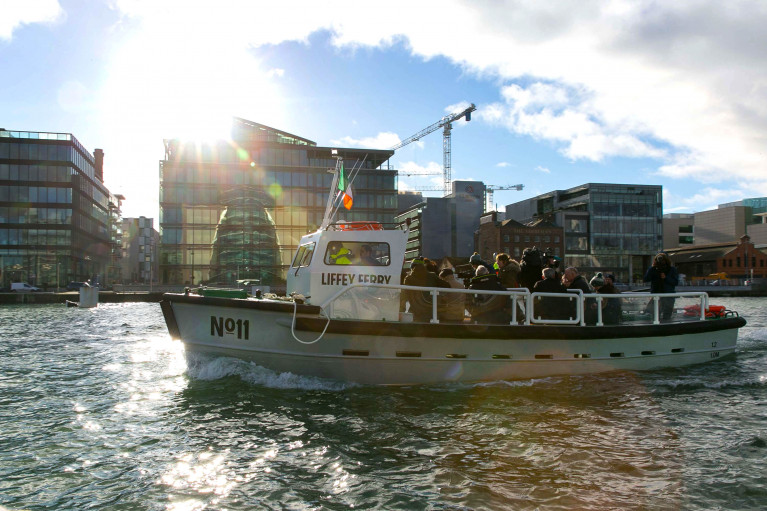Displaying items by tag: Back in Service!
It's back the Old Liffey Ferry service in Dublin's 'Docklands' has returned following easing of Covid-19 restrictions but running in a more subdued environment of the financial and cultural quarter since the outbreak broke, writes Jehan Ashmore.
Operators of the historic river-crossing granted a Royal Charter of 1665 but with origins stretching further back to the 1400's, has in the present day seen ferry No.11 operating to a strict social distancing measure regime. In addition capacity has been considerably reduced from 18 passengers down to just 9 onboard any given crossing. This is to ensue passenger and crew safety during the brief crossing along the capital's under-used water thoroughfare compared to other European capitals, notably in Scandinavia.
The No.11 ferry was due to resume the seasonal service in March but is now available running to a routine Mondays to Fridays schedule. This involves serving three pontoon-based stops lining the Liffey quays. They are on the North Wall next to static-berthed Cill Airne and opposite on the south bank at Sir John Rogerson's Quay before returning across the Liffey to The Point Depot (3Arena) near the East-Link (Tom Clarke) Bridge.
Operating time are as follows:
Mornings: 8am - 10am
Lunchtime: 12pm - 2pm
Evenings: 4pm - 6:30pm
Last year the restored Liffey No.11, an original ferry from the service that closed in 1984 following the opening of the East-Link toll lift-bridge, was re-launched by The Irish Nautical Trust along with the Dublin Port Company and Dublin City Council.
The venture brings back and highlights the proud tradition of the Liffey ferry where dockers commuted across the river before the service ceased due to the new East-Link bridge which remains a vital part of the port's infrastructure and also for commuters.
The bridge was never officially named until recent years as the Tom Clarke Bridge with its lift-bridge section can be raised to permit vessels to reach the capital's older former port quays. These days there is no commercial shipping traffic since regular 'stout' tankers The Lady Patricia and Miranda Guinness ceased trading to Merseyside in the early 1990's. The only callers now are Irish Naval Service patrol ships, visiting naval vessels, motoryachts and tallships notably during festivals that have become infrequent in the last decade.
Currently the only 'Liffey' based activity, albeit domestic is the summer excursion operator, Dublin Bay Cruises which in June resumed service following a delay of an original debut planned for St. Patrick's Day.
Likewise of No.11, DBC's 100 passenger capacity vessel has reduced capacity by 60% leaving 40 passengers to take excursions on a network of cruises involving calls to both harbours of Dun Laoghaire and Howth. In addition a cruise off Dalkey Island incorporating a visit into Killiney Bay.
Further south along the eastern seaboard, Arklow Marine Services carried out further work earlier this year as Afloat noted No.11 was hoisted out of the water, albeit not in Co. Wicklow port. The activity actually took place downriver of the 'Docklands' at the nearby Poolbeg Y&BC in Ringsend which forms part of the modern Dublin Port.
The works saw the installation of a new propellor manufactured by Jimmy Walsh Propellers & Marine Engineering based in Rosslare Harbour Co. Wexford. This is where AMS assisted and also carried out standard maintenance while the UK built ferry was out of the water.




























































